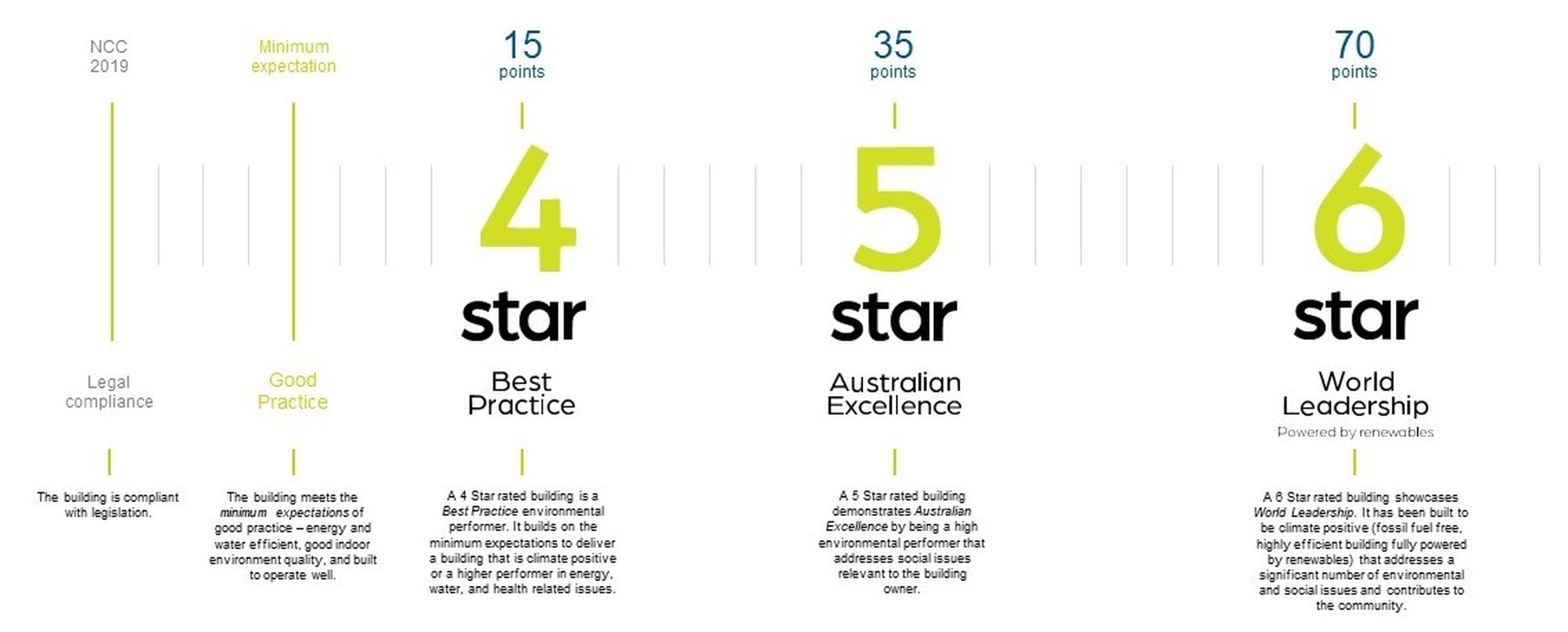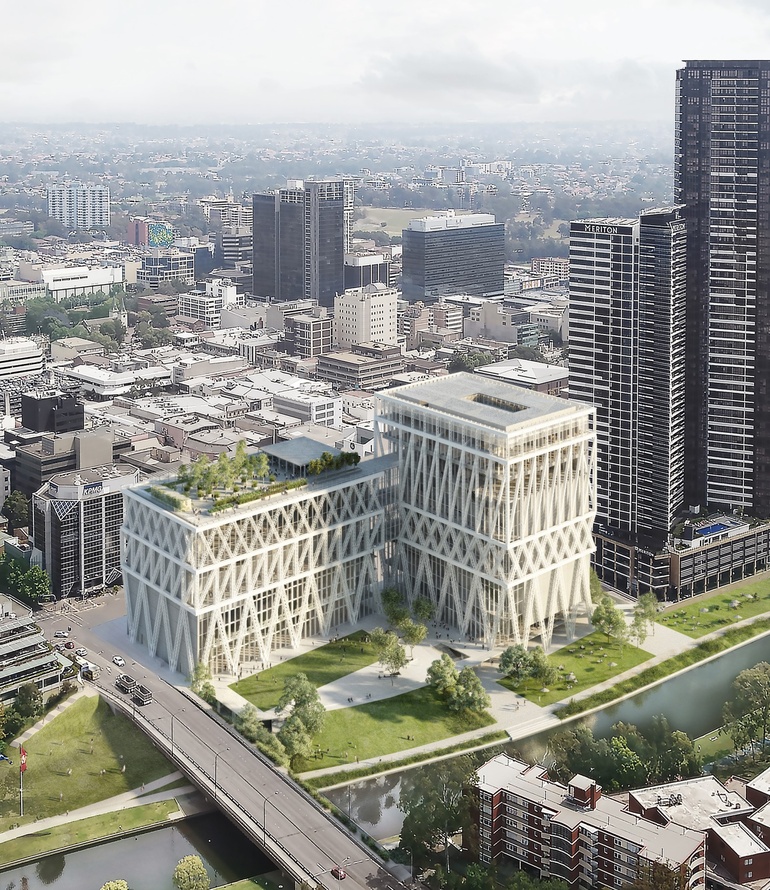What does a new 4, 5 and 6 Star Green Star building look like?
19 May 2022
Buildings that rise to the climate challenge
The headline figure from the Intergovernmental Panel on Climate Change report in 2021 is hard to forget, we are on a trajectory to exceed 1.5°C warming within two decades and decarbonisation by 2050 will be too late: the decade of decarbonisation is now. Our industry knew this and asked for a user-friendly system that enables it to move the needle on climate change.
Green Star Buildings responded and made the difference between 4, 5 and 6 Star Green Star buildings clearer than ever. This clarity was only achievable thanks to industry input, 150 expert panel members and 10 early access partners.
Once 10 minimum expectations are met, a project is rewarded points for each credit achieved. The total points reached determines the Star rating awarded.

4 Star
This rating reflects a Best Practice environmental performer. It builds on the minimum expectations to deliver a building that is either climate positive in operations or a higher performer in energy, water, and health related issues (15 out of 100 points).
5 Star
A rating that demonstrates Australian excellence by being a high environmental performer and addresses social issues relevant to the building owner (35 out of 100 points).
6 Star
This achievement showcases World Leadership. It is reserved for highly efficient buildings fully powered by renewables while addressing a significant number of environmental and social issues while contributing to the community (70 out of 100 points).

Ten minimum expectations for certification
- protect environmentally significant areas
- emit less carbon in construction and operations
- be water efficient
- have improved air, light, acoustics, and product finishes
- promote physical activity
- be built with climate change in mind
- manage environmental impacts during construction
- embrace the diversity of our population
- enable practices that reduce operational waste
- be verified to work
Beyond the Stars
To keep our industry tracking toward our shared goal of a healthy and sustainable built environment, a climate positive path links each of the ratings outlined above. The path defines a building that is fossil fuel free, powered by renewables, highly efficient, built with low carbon materials and when requires, offset with nature.
Where offsets are accepted in the rating tool, they should prioritise natural solutions to carbon capture including afforestation, reforestation or land use activities.
"Green Star buildings recognises that natures has value by itself, by the effects it has on people, and as one of the best tools to reduce our impacts to and from climate change. It doubles the weighting of the Nature category and follows the priorities that we outlined in the Building with nature report." - Jorge Chapa, Head of Market Transformation, Green Building Council of Australia
Right now, the climate positive path is available to 4 and 5 star rated buildings and is a requirement for 6 Star rated buildings. To keep our industry focused on targets outlined in the Paris Agreement and the UN Sustainable Development Goals, from 2023 buildings will need to be climate positive to achieve a 5 star rating, and from 2026, buildings will need to be climate positive to achieve 4 Star rating, but we don't stop there.
The climate positive path requirement will apply to all Green Star rated buildings completed on or after January 2030. We know that is a bold ambition, but after seeing the solutions and innovation presented by industry during the development of Green Star Buildings, we know it is one that is already coming to life.
